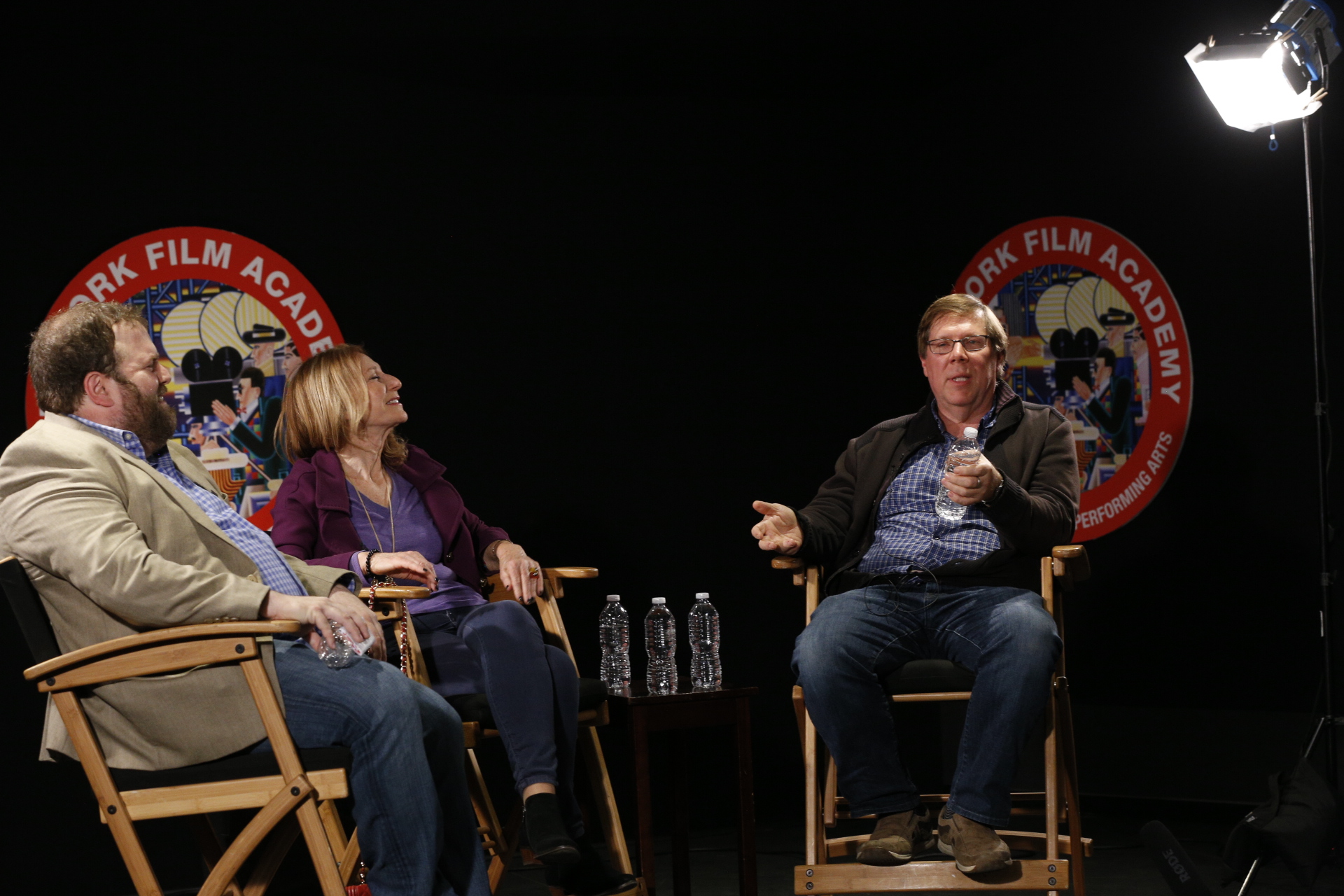
New York Film Academy students gathered in the school’s own Los Angeles theater this week for a screening of the Academy Award Winner for Best Picture Birdman followed by a Q&A with Douglas Crise, the Oscar nominated editor of the film. Crise received an Oscar nomination for Alejandro Gonzalez Inarritu’s Babel in 2007. He has since cut John August’s The Nines, starring Ryan Reynolds and Melissa McCarthy; David Schimmer’s Trust, starring Clive Owen; and Nicholas Jarecki’s Arbitrage, starring Richard Gere which has received much critical acclaim. His collaboration with filmmaker Harmony Korine on Spring Breakers—which stars Selena Gomez and Vanessa Hudgens—has been talked about as revolutionary. Doug just received a BAFTA nomination for is work on Inarritu’s Birdman starring Michael Keaton, Edward Norton, Naomi Watts, Emma Stone and Zach Galifianakis. The discussion was moderated by producer Tova Laiter and NYFA LA’s Dean of Students Eric Conner.
It is often said that the best editors make their cuts “invisible” to the audience, stitching shots together in just the right so that the audience can lose themselves in the story and not focus on the filmmaking craft. Douglas Crise achieved this in a very literal way with Birdman—the vast majority of which appears to be all one shot, but in reality is composed with many, many edits. These cuts are nearly impossible to see at all, even with the trained eyed. So how many cuts were there in Birdman? This has been a topic of hot debate, and while the number of cuts have been kept secret but the team, the special effects department had spilled the beans and said it was 100, which Douglas didn’t deny. This is compared to the 30 definite edits planned before the shooting of Birdman.
To cut together the best film possible, Crise had to dig deep down and use every trick in the book, and even invent many himself to make the impossible possible. For instance, director Alejandro Gonzalez Inarritu would like Michael Keaton’s performance at the beginning of one long shot and Edward Norton’s performance at the end of it. Douglass would have to dig deep to think of solutions such as rotoscoping Michael Keaton out of the first shot and laying him onto the background where Edward Norton appears in the next shot until Keaton walked offscreen and the second shot took over completely. Douglas Crise enjoyed working with Inarritu because the demanding director always pushed him to do his best work, and to achieve levels he originally thought impossible.

Douglas Crise gave NYFA students a unique and important insight into the post production process. We sincerely thank Mr. Crise for taking the time to visit us and look forward to seeing his next critically acclaimed editorial work.
